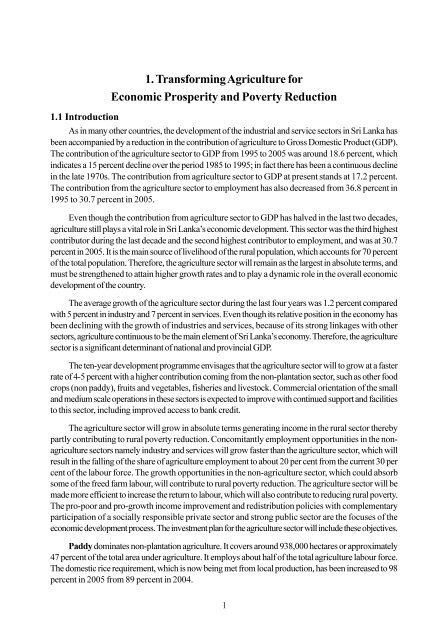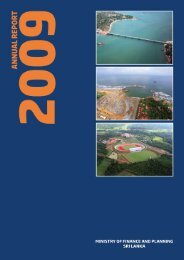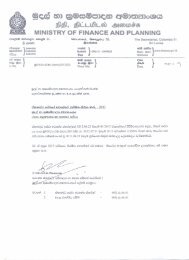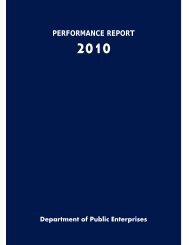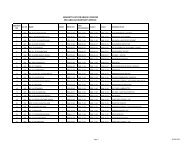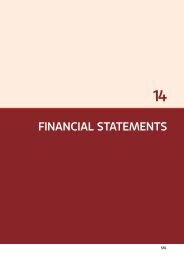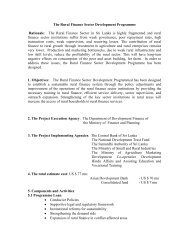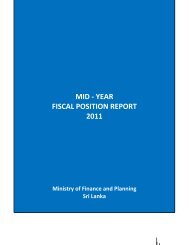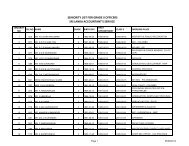Ten-year Horizon Development Framework - Ministry of Finance and ...
Ten-year Horizon Development Framework - Ministry of Finance and ...
Ten-year Horizon Development Framework - Ministry of Finance and ...
Create successful ePaper yourself
Turn your PDF publications into a flip-book with our unique Google optimized e-Paper software.
11 Introduction<br />
1 Transforming Agriculture for<br />
Economic Prosperity <strong>and</strong> Poverty Reduction<br />
As in many other countries, the development <strong>of</strong> the industrial <strong>and</strong> service sectors in Sri Lanka has<br />
been accompanied by a reduction in the contribution <strong>of</strong> agriculture to Gross Domestic Product (GDP)<br />
The contribution <strong>of</strong> the agriculture sector to GDP from 1995 to 2005 was around 186 percent, which<br />
indicates a 15 percent decline over the period 1985 to 1995; in fact there has been a continuous decline<br />
in the late 1970s The contribution from agriculture sector to GDP at present st<strong>and</strong>s at 172 percent<br />
The contribution from the agriculture sector to employment has also decreased from 368 percent in<br />
1995 to 307 percent in 2005<br />
Even though the contribution from agriculture sector to GDP has halved in the last two decades,<br />
agriculture still plays a vital role in Sri Lanka’s economic development This sector was the third highest<br />
contributor during the last decade <strong>and</strong> the second highest contributor to employment, <strong>and</strong> was at 307<br />
percent in 2005 It is the main source <strong>of</strong> livelihood <strong>of</strong> the rural population, which accounts for 70 percent<br />
<strong>of</strong> the total population Therefore, the agriculture sector will remain as the largest in absolute terms, <strong>and</strong><br />
must be strengthened to attain higher growth rates <strong>and</strong> to play a dynamic role in the overall economic<br />
development <strong>of</strong> the country<br />
The average growth <strong>of</strong> the agriculture sector during the last four <strong>year</strong>s was 12 percent compared<br />
with 5 percent in industry <strong>and</strong> 7 percent in services Even though its relative position in the economy has<br />
been declining with the growth <strong>of</strong> industries <strong>and</strong> services, because <strong>of</strong> its strong linkages with other<br />
sectors, agriculture continuous to be the main element <strong>of</strong> Sri Lanka’s economy Therefore, the agriculture<br />
sector is a significant determinant <strong>of</strong> national <strong>and</strong> provincial GDP<br />
The ten-<strong>year</strong> development programme envisages that the agriculture sector will to grow at a faster<br />
rate <strong>of</strong> 4-5 percent with a higher contribution coming from the non-plantation sector, such as other food<br />
crops (non paddy), fruits <strong>and</strong> vegetables, fisheries <strong>and</strong> livestock Commercial orientation <strong>of</strong> the small<br />
<strong>and</strong> medium scale operations in these sectors is expected to improve with continued support <strong>and</strong> facilities<br />
to this sector, including improved access to bank credit<br />
The agriculture sector will grow in absolute terms generating income in the rural sector thereby<br />
partly contributing to rural poverty reduction Concomitantly employment opportunities in the nonagriculture<br />
sectors namely industry <strong>and</strong> services will grow faster than the agriculture sector, which will<br />
result in the falling <strong>of</strong> the share <strong>of</strong> agriculture employment to about 20 per cent from the current 30 per<br />
cent <strong>of</strong> the labour force The growth opportunities in the non-agriculture sector, which could absorb<br />
some <strong>of</strong> the freed farm labour, will contribute to rural poverty reduction The agriculture sector will be<br />
made more efficient to increase the return to labour, which will also contribute to reducing rural poverty<br />
The pro-poor <strong>and</strong> pro-growth income improvement <strong>and</strong> redistribution policies with complementary<br />
participation <strong>of</strong> a socially responsible private sector <strong>and</strong> strong public sector are the focuses <strong>of</strong> the<br />
economic development process The investment plan for the agriculture sector will include these objectives<br />
Paddy dominates non-plantation agriculture It covers around 938,000 hectares or approximately<br />
47 percent <strong>of</strong> the total area under agriculture It employs about half <strong>of</strong> the total agriculture labour force<br />
The domestic rice requirement, which is now being met from local production, has been increased to 98<br />
percent in 2005 from 89 percent in 2004<br />
1


